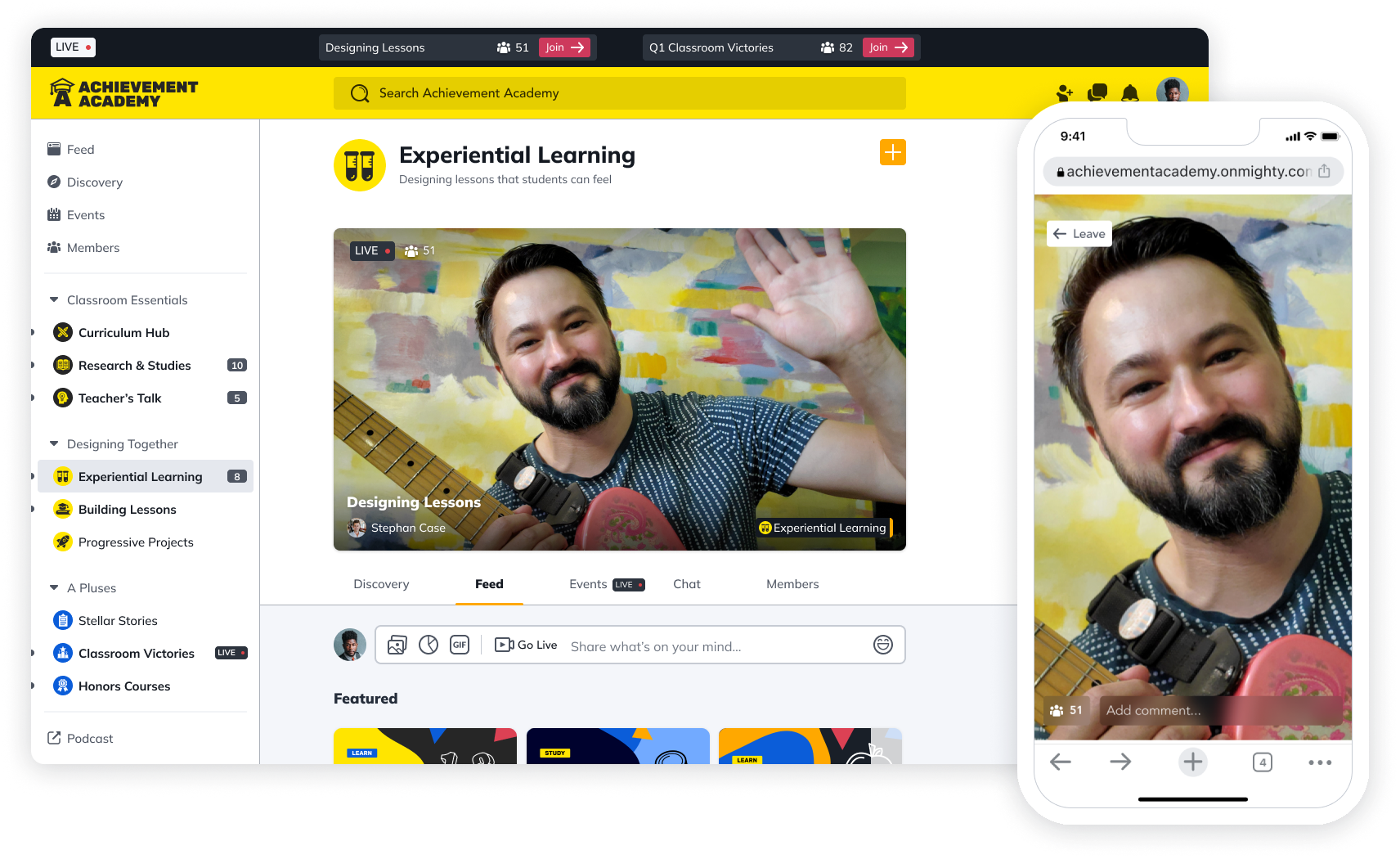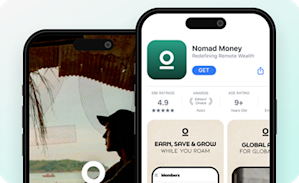Online Courses
How to Build an Online Course that Sells
If you’re creating an online course, here’s how to build a successful one that will stand out!
Author
Last Updated
February 6, 2025

Table of Contents
Say you have great ideas, have gained skills in a particular area, and have become an expert. Then you’re probably looking to share your expertise with others.
Maybe you’ve written countless articles, hosted some webinars, or shared your insights on social media.
Or maybe you’ve just learned something that you feel you need to share with others, and you can’t find ANYONE teaching it well.
You might be ready to build an online course
The good news is that online courses are here to stay. So the question isn’t whether you should build an online course, it’s how to build an online course that sells. You’re a creator with great ideas and at the end of the day you want to build a course that adds value to your community AND yields profit.
Take Ashley Fox’s story. She fulfilled her dream of working on Wall Street then quickly realized she wasn’t happy solely helping millionaires and billionaires building wealth. She saw a need to educate, empower, and modify the mindsets of the average person on finances and wanted to build a community for that purpose.
She tried out a few different course platforms for her community, “The Wealth Builders Community'' until she found success with Mighty Pro. Now she owns her data, has a thriving community, and generated over $100,000 in the first two weeks of launching her online course.
Curious to know how to build an online course that’s so valuable you’ll have an abundance of members signing up like Ashley Fox did? Read on to learn how!
If you want more support in building your online course community, come join OUR Mighty Community for free and meet other new and established community owners! We’d love to meet you. Join for free!
1. Find your audience
Creating a successful online course is so much more than just teaching something to your audience. It’s about creating a journey for your members to conquer something meaningful and interesting together.
This is how you create an engaged community. The more engaged your members are (with each other, the content, and with you) the more successful your online course will be. Let’s take a look at how you can achieve this.
Choose a niche
Choose a specific, clear topic that will captivate your members. If you’re interested in a bunch of things, that’s ok, but you don’t want to confuse your members or yourself. Figuring out exactly what you want to teach isn’t easy, but it makes developing and selling a course a smoother process overall.
To help you narrow in on your topic, consider not only what you’re knowledgeable about but also what you’re passionate about. You may be knowledgeable in marketing, but if you’re not passionate about it, your course may fall flat.

Online courses aren’t limited to business or entrepreneurial topics either, they also can include life topics! You could choose fitness (everyone is looking to improve theirs in one way or another), parenting (you can narrow it down to educating new/expecting parents, parents who have children with disabilities, parents of teenagers, etc.), fashion (sustainable clothing or how to shop for secondhand clothes) ... the options are limitless!
Consider your own personal experience. Think about what you’ve gone through and how this can help others, what you’ve achieved and how, what makes you unique (identity, perspective, knowledge, cultural background, circumstances), and who you’ve been able to help along the way.
You could also base your course on something you’ve recently mastered that you could help others with. You don’t need to be the ultimate expert in an area in order to develop an online course. A lot of creators (especially women) tend to feel imposter syndrome by devaluing their expertise or questioning whether they’re truly “ready” to launch a course. Just remember that your ideas and experiences are fresh and you’ve just been through something — who better to teach it than you?!
Let’s say you’ve taken a year to decrease your stress. You ended up switching companies (the previous one had a toxic work environment), you implemented meditating, started practicing yoga and breathing exercises, and you’ve distanced yourself from negative friends. Along the way you noted what worked, what challenges you faced, and times when your stress just didn’t budge.
Sure, there are “meditation/wellness” gurus out there who are technically more qualified, but you’re an average person who tested out some strategies and it worked! You can guide those who were like you a year ago on a journey to becoming less stressed.
This approach will give you an opportunity to be not only specific but authentic. Potential members will be drawn into your course because of how distinct your topic is and how much they can relate to you.
Pick the right audience
Now that you’ve picked your topic, it’s time to choose your ideal member. Your ideal member will be someone who needs your course because the topic will help them achieve their goals and yours specifically resonates with them.
Just like your topic, you want to be specific with who your ideal members are. Ultimately being too general about who your audience is won’t attract the right people (or worse won’t attract anyone at all). Be clear about your members’ cultural backgrounds, identities, circumstances, what they want to achieve, where they’ve been, and what their pain points are.

You want potential members to see your online course and think, “This is for me!” You’ll be attracting the right people, at the right time, with the right course.
Going beyond that, if you want your online course to sell, you might want to attract members with money to spend. Let’s go back to the stress reduction example. You’ll want to pinpoint members who have the means to purchase your course. That’s why you might want to make the course for, say, high-level executives, sales professionals, or medical professionals.
Consider B2B
Your ideal member doesn’t necessarily have to be a consumer. They can also be an organization. Sometimes, your course will have more appeal to an entire business than to separate individuals. Organizations are always looking to teach their employees.
The possible training topics are endless:
Cyber security
Sales
Diversity and inclusion
Project management
Team collaboration
Strategic planning
Conducting effective performance reviews
Wellness
When it comes to wellness you could sell your course to an organization who is looking to reduce the stress of their employees. Their goal is to have more relaxed and happy employees — which will positively impact their bottom line.
You can present your online course as a solution to their underlying needs. Again though, consider if everyone at the organization is your ideal member (wellness, cyber security), or if there’s a specific type of person you’re targeting (sales, performance reviews).
Even if you have a course targeted at specific individuals within the organization, you could test it out on that group, see how it goes, then create a version of that course that’s more general and can be suitable for the whole organization.
Validate the idea
Speaking of testing out your course, you want to validate everything up until this point. Make sure there’s a need for the course you’re about to build and that your ideal member is interested in purchasing it. Otherwise you’ll end up wasting your most precious resource — your time.
There are a few ways you can validate your course topic. You’ll want to find out whether people are searching for it. You can do this by seeing if it’s trending, checking the search volume, and even going to online public forums to see what kinds of questions people are asking about in relation to your chosen topic.
Conduct more market research when it comes to your competition. See what other courses are offering and if there’s a gap (that’s where your course comes in to fill it). Make sure to differentiate your course from what your competitors are offering. Cover your topic in a unique way and you’ll attract the right people.
A great way to test the demand for your course is through presales. You will be able to quickly see if there’s a need for your course by how many members sign up for it. Encourage presales by having an early bird special for individuals who purchase your course.
2. Build the course
Let’s get into the technicalities of how to build a successful online course.
While choosing an enthralling topic and narrowing in on your ideal member is crucial, you also want a course that is high quality, with the right features and the right feels (aka transformative journey). Ahead, we delve into just that.
Choose the right pricing
The “right price” doesn’t mean “the lowest price.” While you want an online course that sells, you don’t want to undersell yourself. On the flip side, your price should make sense - it shouldn’t be so highly priced that members can’t afford it.
If you’re developing a course for the first time it’s really hard to know what to charge for it, because you have no reference point.
Most creators tend to price their first course too low. Choose a price that makes you feel a bit uncomfortable. Something that you think, “mhmm this feels like I’m charging too much.” Try it.
You’re here to offer great value, and there are members who are willing to pay for it. People see a higher price and think higher quality. They will also see it as an investment.
So don’t undercut yourself. You’re here to make a difference in your members’ lives, and you deserve to be paid well.
It’s also worth taking into consideration leaving room for discounts and promotions (especially if you’re offering early bird discounts). If you price your online course too low, it’s hard to offer a special rate without losing money.
With that being said, don’t outprice your audience. You have to make a reasonable guess as to what your audience can afford.
Lastly, you can set your price based on the value it adds to your audience. The transformation that they will go through — what will it be worth for them? What would they have to pay otherwise to achieve that transformation?
Focus on transformation
Remember that the whole purpose of your course is to take your members on a transformative journey. People don’t just pay to learn; they pay to be transformed. They want to implement skills to be better — more fit, financially free, in touch with their purpose, etc.

Your course is what will help drive these members into what they want: a transformation. So always keep that at the forefront, and ask yourself, “Where will these members be in a few months to a year from now after taking my course?”
Consider how you present your information to your members and how you will guide them through a transformative journey.
Choose the right platform

A great platform (one that is easy to navigate, amplifies your course, and is well designed) will make all the difference and help you stand out from the competition. The right platform will help your members connect with each other and you, and they’ll be more inclined to want to show up and go through the journey.
Finding the right platform can make a world of difference, especially when it comes to the success of your online course. Ashley Fox, who we mentioned at the beginning of this article, turned to Mighty Pro to solve her pain points.
Mighty Networks is a unique cultural software platform that allows creators to bring together their content, community, commerce, and courses under one roof (their brand) and make it available on any device. There’s so much you can do like virtual events, polls, posts, live streams, and more!

While there are so many platforms out there to choose from, none quite match up to what Mighty Networks can provide, making the difference between a mediocre course and one that successfully sells.
Test your course
You’ve tested your idea, you chose the right pricing and platform, and now it’s time to put everything together and test the actual course material, structure, and journey. This is perhaps one of the biggest mistakes new course creators make — not actually testing their course.
Let’s be real, anyone can come up with a good idea, but it’s about putting that good idea to work to see if it actually sells. Plus, sometimes our default is thinking we know best (and therefore that we don’t have to test out our course) or that everyone knows what we’re thinking and are on the same page. Never assume!

Before you hit publish and launch your course out into the world, you need to verify that what you’ve created is exactly what your members need. That’s where beta testing comes in. You can give beta testers the full experience in return for providing feedback.
Not only does this allow for quality control but you can get valuable testimonials. And your testers will be able to tell you whether your course was too long or too short, if they’re fully grasping the concepts, any technical issues they’re having, mistakes they’re finding (e.g. spelling mistake or if you forgot to upload course material), and overall whether they’re finding the community engaging.
You’ll hear all types of feedback, positive and, shall we say, critical. All of the feedback will help you build a better course.
3. Develop a marketing plan
Building courses online that sell also means marketing them properly. You don’t need a huge budget for this either (especially if you’re just starting out); you just need to be strategic about marketing.
Social media
Make your social media work for you! You don’t need to have a huge following. You just need to be active (post consistently), engaging (comment/like on other your ideal members’ posts), and reach out (message ideal members individually).
This is your chance to talk up your course — give potential members a behind-the-scenes sneak peek on what you’ve been working on, share your personal experiences (in relation to the course topic), and post testimonials (that you received from beta testers). Testimonials are a great way to validate your course and gain new members.
Email marketing is a great way to inform your prospects about your online course. The work is already done for you if you have an email list of any kind (especially if you regularly communicate with them).
They’re looking forward to your news (otherwise they would have unsubscribed) — so go ahead and promote your course to them. One subtle way to promote your course is by bringing value and sharing tips and tricks, then at the end of your email include a call to action (CTA) to join your community.
Frequent reminders about your course are also key since people have a lot of distractions in their inboxes.
Cross promotion
Cross promotion (posting/promoting your course on another platform) is a great way to get your course out there to an audience you wouldn’t otherwise have access to. There are endless ways you can cross promote your online course, such as guest appearances on podcasts, posting in relevant LinkedIn groups, speaking at events, guest blogging, asking others to share your course launch (even those who provided testimonials).
Don’t be surprised if people start flooding your DMs with inquiries about your course.
Conclusion

If you’ve followed these steps, you’ve got a great foundational understanding of how to build an online course that sells. Realistically, all you need is a clear topic, an ideal member, a transformative journey where your members will achieve results, and strategic marketing tactics. By putting these strategies to work, you’ll be well on your way to building an incredible online course and successfully selling it.
We can’t wait to see what you create.
Ready to create and sell your online course?
Ready to start building your community?
Start a free 14-day trial to explore Mighty—no credit card required.
More like this
Join Mighty Community
Learn the principles of Community Design™ (and see them in action) alongside thousands of creators and entrepreneurs. It's free to join!

Online Courses
Creating a Course
Teaching a Course
Course Platforms
Selling a Course
Communities & Memberships
Community Platforms
Managing a Community
Building a Community
Growing a Community
Monetizing a Community
Content Creation
Creators & Entrepreneurs
Monetization
Content Creation
Starting a Business
Website Builders
Creating & Managing a Website
Events
Event Platforms
Hosting & Marketing Events
Branded Apps
Creating a Mobile App
Coaching Apps
Community Apps
Coaching
Mastermind Groups
Starting a Coaching Business
Coaching Platforms
Filter by Category
Online Courses
Communities & Memberships
Creators & Entrepreneurs
Events
Branded Apps
Coaching
Build a $1 Million Community
This free masterclass went viral—sign up to learn why.

























